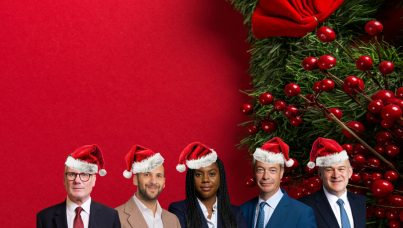Worcester's Weblog

MORI chairman Sir Robert Worcester analyses the latest opinion poll data.
Saturday's reports of the Pope's funeral pushed the election, and polls as well, to the middle of most papers, if they covered polls at all. On Sunday it was princes, not politics, which focussed the coverage.
Four polls have appeared, not three as reported in the news broadcasts:
- ICM in the Sunday Telegraph; fieldwork on April 7-8; 1,021 sample via telephone; Conservatives 34 per cent, Labour 38 per cent, Liberal Democrats 20 per cent, others seven per cent; demographic weighting, reporting all giving VI.
- YouGov in the Sunday Times; April 7-9; 1,552 via the internet; Con 35 per cent; Lab 37 per cent, Lib Dems 21 per cent, others seven per cent; demographic and baseline VI weighting, reporting all giving VI.
- MORI for the Observer and Sunday Mirror; April 7-9; 1,004 via the telephone; Con 33 per cent, Lab 40 per cent, Lib Dems 19 per cent, others seven per cent; demographic weighting, reporting on 627 who said they were 'absolutely certain to vote'.
- BPIX in the Mail on Sunday (I'm trying to find out who they are, but the MoS doesn't let us in on the secret); April 7-9; 1,615 via telephone; Con 37 per cent, Lab 37 per cent, Lib Dems 20 per cent, others six per cent; demographic weighting reporting 'definitely turn out'.
The Independent on Sunday limps along with a report of polls over the last seven days, like most polls of polls and rolling polls (I call them rolypolys), out of date and not indicating when the fieldwork was.
As usual, too much is made about the lead or gap between Labour and the Conservatives, and not enough about the shares of each parties. The share to watch is the opposition's, and also whether the poll is reporting the view of everyone in their sample who selects a party (which depletes the sample base by around 20 per cent when 'won't vote/undecided/refuse to say' are taken out) and also if they are repercentaged, and if so, on what basis.
These are hardly ever reported, but it doesn't mean they are not important. Tony King wrote an article in the Telegraph recently saying that a very important criterion of poll accuracy is the sample size. Other academics go on about the 'gold standard' of polling being probability samples.
Yes, but... The largest poll in the EEC referendum in 1975 was in fact both the largest and a probability sample, and was the furthest out, five points each way, with 72 per cent yes and 28 per cent no, while the result was 67 per cent to 33 per cent.
Fieldwork timing in a general election is the most important, which limits probability samples somewhat. A useful maxim is that 'the poll that polls last polls best'.
Another is the wording of the questions, which sub-editors on broadsheets usually try to cut, and in our experience, the tabloids run in full. The wording of the question means a lot, and should be reported in full by the media, and noted by the reader/listener.



